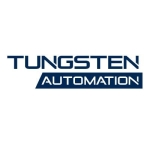What is our primary use case?
We started with a pilot for our payroll department. It essentially takes the transactions that come into our payroll department on Fridays and Mondays, and sorts through those transactions. If there are any discrepancies or errors based on the defined criteria, it notifies the payroll department, and they can rectify those. Otherwise, paychecks don't process.
Other than that, we have some data migration between Excel spreadsheets that we do, and we have contracts that we host on a web server that, if they don't have transactions for the same period of time, we have the automation go in and close those contracts out so the transactions can't go against them.
How has it helped my organization?
This was pretty much our first experience with automation. There wasn't anything prior. As far as UiPath is concerned and how automation has transformed the agency, we've found that hundreds of thousands of hours are being saved every year now, thanks to these processes. On a division-by-division basis, hundreds of thousands of dollars are being saved every year.
What is most valuable?
The wide variety of activities that are available for third-party applications has been quite useful when it comes to APIs. It's allowed us to leverage the other applications that we use within the agency. We can actually utilize the UiPath Suite over things like Microsoft Power Apps, Blue Prism, or Automation Anywhere, where they didn't have the capability to really interact with a bunch of third-party applications.
UiPath helps save taxpayer dollars, which is a good, socially responsible, cause.
The UiPath community is very good. Eight to nine times out of ten, if I have a question or I'm stuck, I can go to the forums, and I can find experts, or I can find YouTube videos, and I can talk to other people. The contractors that we've worked with in the past were super helpful, and everybody's cooperative. Everyone wants to share ideas. At the end of the day, we all want just to make everyone's lives easier.
I've used the UiPath Academy's courses. I was thrown right into the fire. This was thrown on my plate, and they said, "Hey, you're going to be working with the contract; you got a month to spin up an automation."
I learned while I did; however, as our center of excellence has grown within the agency, we've decided to adopt some new developers into the program, so we don't have to run into that same issue with new people. With the two or three that are coming up to be trained for the end of this year, it's definitely proven a lot of value, since we don't have to sit around and have people sit over shoulders for projects. It allows them to take their time, go through it, and practice. For me, going through some of the advanced courses, for the most part, I found them very well run and have been satisfied with them.
What needs improvement?
One thing that I would really like to see is some migration processes between environments. Right now, we either rely on a very rough CI/CD pipeline and/or manual efforts to transfer packages from one environment to another. Having some in-suite migration process would make our lives so much easier.
The education aspect is probably the hardest part of getting people on board. Our server administration is separate from the rest of our CoE. We have to rely on them, and they're not necessarily privy to the UiPath Suite in general. Making it easier for them would make our lives easier, thus making our customers happier.
For how long have I used the solution?
We've used UiPath for about two and a half years. We adopted it in late 2019, or early 2020.
What do I think about the stability of the solution?
We host on-prem, so I can't speak for the cloud support, though I've heard only good things. As far as stability is concerned, in terms of everything that we've moved into production, the only reason anything's ever broken, the only reason anything has ever not worked in general, has been due to agency oversight of people changing things without notifying the proper teams. As far as the UiPath's concerned, I would say it's pretty close to 100% stable.
What do I think about the scalability of the solution?
The scalability question is hard to answer. The bottleneck is the fact that we are in the public sector, and we're dealing with a lot of state bureaucracy. We're limited in scalability, due to constraints that are outside of UiPath. I will say that as time has progressed and the more this technology's been adopted - including education and business awareness - the technology itself is very scalable. What's holding it back is general knowledge and public knowledge.
How are customer service and support?
Most of the technicians I've worked with have been very helpful. Even if they don't have the answers, they're usually pretty good at getting back to me within two to three days and have relatively good answers. Or, if they can't answer it, they might steer me in a direction that will help me.
As far as our accounts are concerned, we actually just received a couple of new tech advisors that deal with our agency. The team has been nothing short of fantastic to us. There have been times when we'll have our weekly meetings where they won't have the answer for us, and they'll say, "I'll get to you by next week." There have been times he gets back to us an hour after the meeting, and have detailed everything, or scheduled a call, so we can work on something together. That's been fantastic.
How would you rate customer service and support?
Which solution did I use previously and why did I switch?
I did not previously use a different solution.
How was the initial setup?
I did the development, and I worked with our administrative team to deploy that automation.
It was straightforward. The education part and trying to have our center of excellence be centralized and having people all on the same page takes time. It came down to that whole migration where we are either working with a third-party application or system, like GitLab or some CI/CD pipeline, to get those packages migrated, or doing it manually led to a lot of hiccups throughout the course.
What could have been done in a matter of hours or maybe a day or two, ended up taking, for almost every one of our automations, about a week or two, thanks to meetings, communication, and lack of education.
We have two environments. We have our Test DEV, then we have our production. Once the developer completes the testing, it's sent over to our BAs; our BAs test it, then they verify that information with the customer to ensure the results are satisfactory. We then contact our server administrators, migrate the package over, and discuss the run time with the customers.
Also, all of them, up to this point, have been unattended, so they're able to select a time and a date, whether it be daily, or weekly, or whatever that case is, and a time. We settled on a Thursday implementation date, no matter what, and the server administrators above the back page, then it goes on from there.
What about the implementation team?
As far as consultants were concerned, they worked with us on the initial pilot. Everything else was done in-house. We have taken a step back to readdress our statement of work and how we plan on governing RPA going forward. We are working with a consultant company now to deal with more of the administrative overhead that was involved with this. However, we do plan that moving forward all development and deployments will still be held in-house by our developers and our administration.
What was our ROI?
My understanding is we are expected to hit the ROI that we're projected to hit next year. Even this year, with only three automations running for the entire year, we were able to cover our costs in that aspect essentially.
There are no more than five automations in full swing, and we would like somewhere between 15 and 20 next year. Likely, the ROI will continue to snowball.
One of the automations that we put live essentially monitors updates to vendor contact information and conversations that are held with the vendors in our agencies and uploads that to a web database. Then, those conversations are logged in an Excel Spreadsheet that managers like to keep updated. This is roughly saving, on average, about 40 hours a week. Multiply that by 52 work weeks, and it's a lot of savings. It's roughly the cost of two full-time salaries that we are saving.
What's my experience with pricing, setup cost, and licensing?
I am not super privy to pricing information.
Which other solutions did I evaluate?
In the beginning, we were choosing between Blue Prism and UiPath, and keeping Microsoft Power platforms on the side burner to possibly automate things that were specifically within Azure and AD.
While those three were being measured and worked through, we had to go through the bureaucratic chain of state government. It turned out that the UiPath suite, in general, was covering the bases we needed to cover with the third-party application integration. At the same time, the ease of getting everything up and running, the fact that we had a one-stop shop, and we didn't have to buy all these extra additional components just to make simple automation was worth it. Then, just talking with different industry leaders, contractors, and consultants, everybody suggested UiPath when it came down to Blue Prism and UiPath. That was the route we went.
What other advice do I have?
We have yet to use the AI's functionality.
If you were a company looking to expedite as well as remove the monotony of a lot of the work that gets done, especially in the public sector, this is a good option. You likely have the same thing written down probably five times in 16 different places. Getting rid of that workload to free up people for doing other things, is the way to go.
The most important aspect of all of this isn't having an amazing developer. It isn't having your great server admins or whatever the case is. It's making sure that the people you want to work with are educated and on board before it even starts. Making sure that people understand what RPA is and what UiPath can do for them is the most important thing. Our biggest roadblocks and the biggest things that have sprung us forward are all based on that educational aspect.
I'd rate the solution a nine out of ten.
If you asked me that question two years ago, I probably would've been closer to a six out of ten. The product improved, and the overall competence in the industry, and within the company in general, has improved across the board. The people I've worked with, including our tech advisors or sales rep, are great. There's a lot more confidence and stability. It's definitely given our agency a sense of confidence, and it's much easier to see where this is going. The results are what we've imagined. Everything seems to be much more real at the tail end of 2022. We're hoping this will be stable for our agency in 2024 as well.
Which deployment model are you using for this solution?
On-premises
Disclosure: My company does not have a business relationship with this vendor other than being a customer.






















